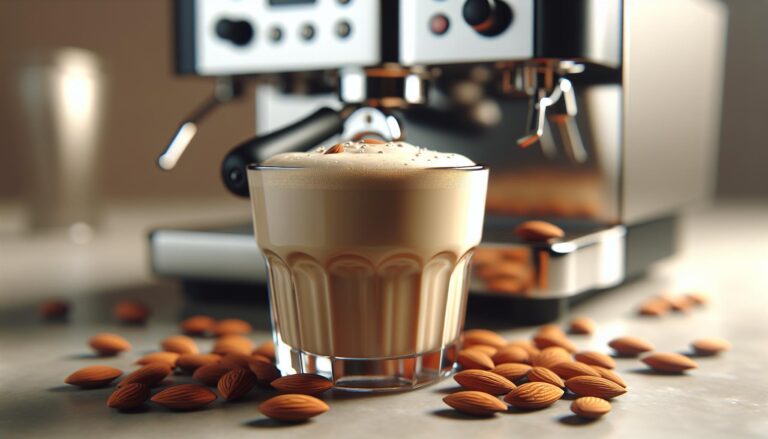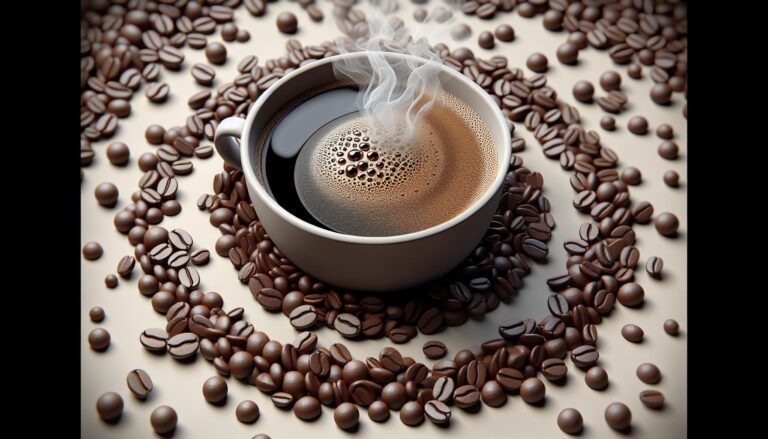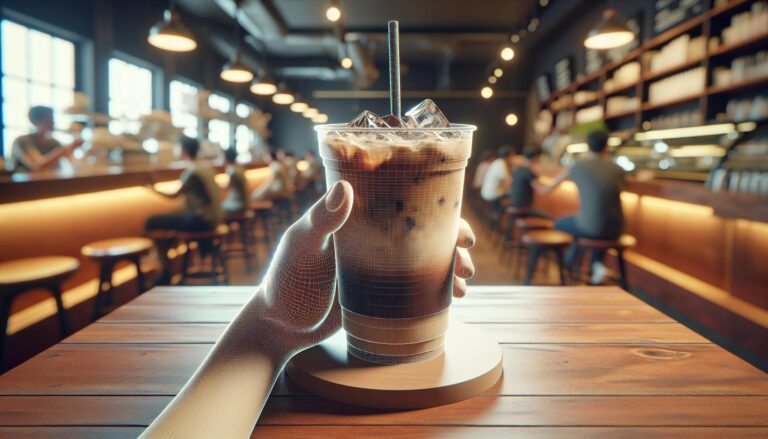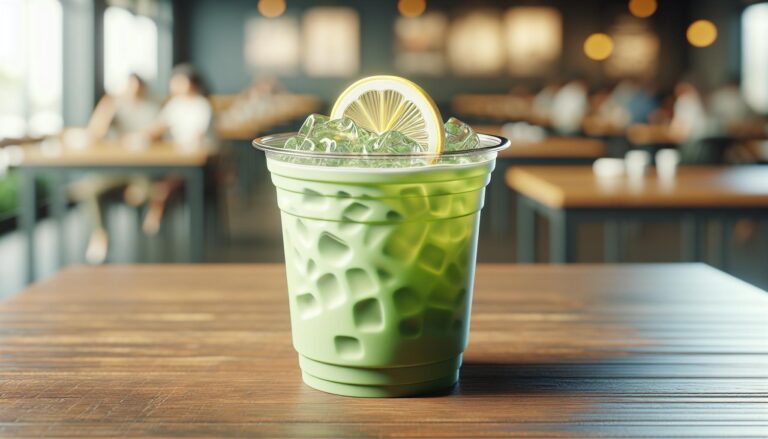Starbucks Cold Brew Caffeine Content: What You Need to Know!
How much caffeine is in a Starbucks Cold Brew? A 16-ounce (Grande) cup of Starbucks Cold Brew contains approximately 205 milligrams of caffeine.
This smooth and refreshing beverage is steeped for 20 hours to deliver a rich, flavorful coffee with a substantial caffeine boost, making it a popular choice for coffee enthusiasts looking for a strong yet smooth option.
Understanding the caffeine content in Starbucks cold brew can help you make informed choices about your daily intake.
Let’s explore what makes Starbucks cold brew a favorite and how its caffeine content stacks up.
Key Takeaways
- Starbucks Cold Brew Process: This coffee is brewed by steeping coarsely ground beans in cold water for 12-24 hours, producing a less acidic and smoother taste along with higher caffeine content compared to regular brewed coffee.
- Caffeine Content Factors: The caffeine levels in Starbucks cold brew depend on brewing time, coffee-to-water ratio, type of coffee beans used, and serving size, with larger sizes and longer brewing times resulting in more caffeine.
- Comparison with Other Beverages: Starbucks cold brew has higher caffeine content than its iced coffee but typically less than regular hot brewed coffee. It also contains more caffeine than a single shot of espresso.
- Health Implications: Moderate caffeine intake can boost alertness, metabolism, physical performance, and mood. However, excessive caffeine can cause insomnia, anxiety, dependence, digestive issues, and elevated blood pressure.
- Customizing Your Drink: Lower caffeine content by adding water, ice, or milk to your cold brew. Enhance flavor without adding caffeine by using syrups, non-dairy milk options, spices, or whipped cream.
Understanding Starbucks Cold Brew
Starbucks cold brew stands out in the coffee world for its unique process and smooth flavor. Comprehending what it is and how it differs from regular brewed coffee helps you appreciate this favorite beverage.
What Is Cold Brew Coffee?
Cold brew coffee involves steeping coarsely ground beans in cold water for an extended period, usually 12-24 hours.
This slow extraction process creates a coffee concentrate that is diluted with water or milk before serving. It’s known for its less acidic and smoother taste compared to hot-brewed coffee.
Because of the long brewing time, cold brew extracts more caffeine from the coffee beans, making it a potent option for those needing an extra boost.
How It Differs from Regular Brewed Coffee
Regular brewed coffee, or hot brew, uses hot water to quickly extract flavors from ground beans, taking mere minutes.
This method results in a more acidic and bitter taste, often requiring sugar or cream to balance it out.
Cold brew, however, avoids heat, which preserves the natural flavors and reduces bitterness.
Moreover, the cold brewing process extracts different compounds, leading to a distinct flavor profile and higher caffeine content.
So, when choosing between cold brew and regular coffee, consider the brewing process and your caffeine needs.
Understanding the differences allows you to tailor your coffee experience to your preferences, ensuring you get the most enjoyment and benefit from your cup.
Also Read: Starbucks Nitro Cold Brew Caffeine Content
Caffeine Content in Starbucks Cold Brew
Starbucks cold brew is known for its rich flavor and high caffeine content. Understanding the factors affecting caffeine levels helps in making informed choices.
Factors Influencing Caffeine Levels
The caffeine in Starbucks cold brew depends on several factors:
- Brewing Time: Longer brewing times lead to more caffeine extraction.
- Coffee-to-Water Ratio: Higher coffee concentration increases caffeine content.
- Type of Coffee Beans: Robusta beans have more caffeine than Arabica beans.
- Serving Size: Larger sizes contain more caffeine. For instance, a 16 fl oz grande has more caffeine than a 12 fl oz tall.
Comparison with Other Starbucks Beverages
When comparing Starbucks cold brew to other beverages:
- Cold Brew vs. Iced Coffee: A grande cold brew has about 205 mg of caffeine, while a grande iced coffee has about 165 mg.
- Cold Brew vs. Hot Coffee: A grande hot brewed coffee contains around 310 mg of caffeine.
- Cold Brew vs. Espresso: A single shot of espresso has about 75 mg of caffeine.
Understanding these differences helps in selecting a drink that matches your caffeine needs.
Health Implications of Caffeine
Consuming Starbucks cold brew means you’re getting a significant dose of caffeine. Knowing how caffeine affects your health is key. Let’s break down the benefits and potential risks of caffeine intake.
Benefits of Caffeine
Caffeine’s primary benefit is increased alertness. You feel more awake after consuming caffeinated drinks. It blocks adenosine, a chemical that makes you tired.
Studies show that caffeine improves focus and mental performance, which makes it a go-to for many professionals and students.
Increased Metabolism: Drinking caffeine can boost your metabolic rate by 3-11%. This effect aids in burning calories faster, which can be helpful for weight management.
Enhanced Physical Performance: Caffeine increases adrenaline levels. This hormone helps your body prepare for physical activity. Athletes often drink coffee or other caffeinated beverages before workouts for improved endurance.
Mood Elevation: People often experience mood improvements with moderate caffeine consumption. It can help elevate your mood and combat mild depression symptoms.
Potential Risks and Side Effects
While caffeine has its perks, it’s crucial to be aware of its risks. High caffeine consumption can lead to health issues.
Insomnia: Too much caffeine can disrupt your sleep patterns. Consuming caffeinated drinks, especially late in the day, can cause insomnia or poor sleep quality.
Anxiety: High intake of caffeine can increase anxiety levels. If you’re prone to anxiety, consuming too much caffeine can worsen the symptoms.
Dependence: Regular use of caffeine can lead to dependence. You’ll start needing more caffeine to achieve the same alertness as before, leading to increased consumption.
Digestive Issues: Some people experience stomach discomfort after drinking caffeinated beverages. Caffeine can stimulate the digestive tract, leading to conditions like acid reflux or irritable bowel syndrome (IBS).
High Blood Pressure: There is a temporary spike in blood pressure after consuming caffeine. Those with hypertension should monitor their caffeine intake closely.
Understanding these benefits and risks helps to consume Starbucks cold brew wisely. This awareness ensures you enjoy your coffee while minimizing potential downsides.
Also Read: Starbucks Coffee Caffeine Content
How to Customize Your Starbucks Cold Brew
Customizing your Starbucks cold brew lets you control your caffeine intake and tailor the flavor to your taste.
Lowering the Caffeine Content
Lowering the caffeine content in your Starbucks cold brew is simple. Ask for a cold brew with added water or ice. This dilutes the drink, reducing caffeine concentration.
Another option is to request a “cold brew misto” by asking for equal parts cold brew and milk. If you like flavored beverages, try asking for a cold brew with fewer coffee grounds brewed for shorter periods, leading to less extracted caffeine.
Enhancing Flavor Without Adding Caffeine
Enhancing flavor without adding caffeine can be achieved with various mix-ins. Consider sweeteners like classic syrup or flavored syrups (vanilla, caramel) to add sweetness without extra caffeine.
Non-dairy options like almond milk or oat milk add creaminess without boosting caffeine levels.
Adding spices like cinnamon or nutmeg brings warmth and depth to the drink without altering the caffeine content. Whipped cream or cold foam tops can also enhance your cold brew with a rich texture.
Conclusion
Knowing the caffeine content in Starbucks cold brew empowers you to make better choices based on your preferences and needs.
Whether you’re looking to boost your energy or enjoy a smooth, low-acidity coffee experience, understanding the brewing process and customization options can help you tailor your drink perfectly.
With these insights, you can enjoy your Starbucks cold brew just the way you like it, ensuring every sip meets your expectations.
Also Read: Starbucks Caffeine Content
Frequently Asked Questions
What is Starbucks cold brew coffee?
Starbucks cold brew coffee is a smooth, highly caffeinated coffee made by steeping coarsely ground coffee beans in cold water for an extended period. This process results in a low-acidity, rich-flavored beverage.
Why is Starbucks cold brew coffee so popular?
Starbucks cold brew coffee has gained popularity due to its smooth taste, low acidity, and high caffeine content, making it an appealing option for coffee lovers seeking a refreshing and potent drink.
How much caffeine is in Starbucks cold brew coffee?
The caffeine content in Starbucks cold brew varies, but a 16 oz (Grande) typically contains around 200 mg of caffeine. Factors such as brewing time and bean type can affect the exact amount.
How can I customize Starbucks cold brew to lower caffeine content?
To lower the caffeine content in Starbucks cold brew, consider diluting it with water or milk, or opt for a “cold brew misto” which combines cold brew with steamed milk.
What are some ways to enhance the flavor of Starbucks cold brew without adding caffeine?
You can enhance the flavor of Starbucks cold brew by adding sweeteners, non-dairy milk options, spices like cinnamon or nutmeg, and toppings such as whipped cream or chocolate shavings.
Does the type of coffee bean affect the caffeine levels in Starbucks cold brew?
Yes, the type of coffee bean used can impact the caffeine levels in Starbucks cold brew. Typically, darker roasts have slightly less caffeine than lighter roasts, but the variation is generally minor.
What is the brewing process for Starbucks cold brew?
Starbucks cold brew is made by steeping coarsely ground coffee beans in cold water for 20 hours. This slow brewing process extracts the flavors more gradually, resulting in a smooth and less acidic coffee.







